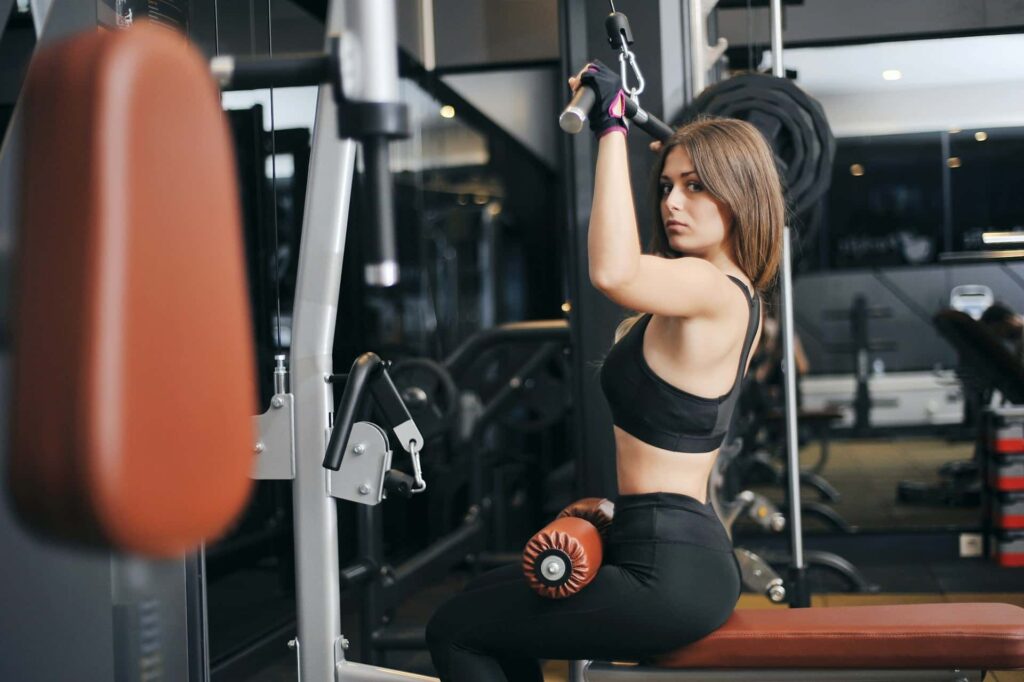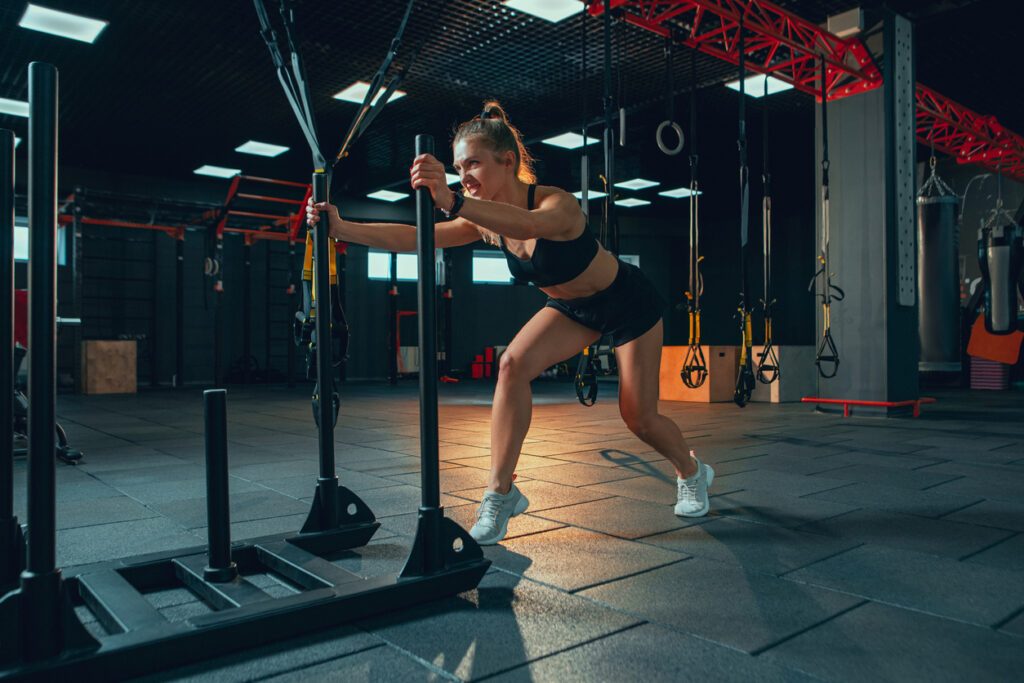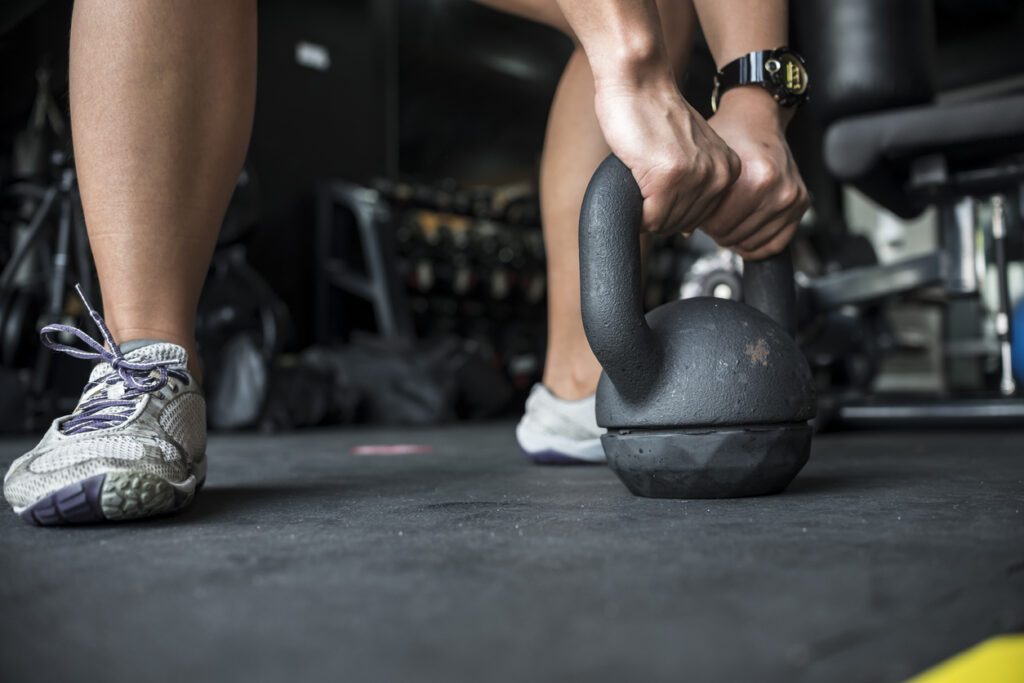
Summary
Welcome / Welcome / Tips for getting started / Shoulder exercise: our selection of exercises for strong shoulders
Shoulder exercise: our selection of exercises for strong shoulders
Vous cherchez des exercices efficaces pour des épaules solides ? Cet article est conçu pour vous aider à renforcer vos épaules avec des exercices ciblés. Nous couvrons tout, des échauffements aux programmes d’entraînement avancés.
Découvrez l’importance de l’échauffement pour prévenir les blessures et maximiser vos performances. Apprenez les meilleurs exercices avec et sans équipement pour développer vos deltoïdes. Intégrez des exercices dorsaux pour un équilibre musculaire optimal.
Prêt à transformer vos épaules ? Cet article est votre guide complet pour des épaules fortes et équilibrées. Suivez nos conseils et commencez dès aujourd’hui !
Summary
Understanding shoulder anatomy
The different shoulder muscles
The shoulder is a complex of muscles that allows a wide range of motion. Knowing these muscles is essential to effectively target your workouts.
Anterior, middle and posterior deltoids
The deltoids are divided into three parts:
- Deltoïde antérieur : Situé à l’avant, il est crucial pour les mouvements de poussée.
- Medial deltoid: Placed on the side, it is used during lateral elevations.
- Deltoïde postérieur : À l’arrière, il joue un rôle clé dans les mouvements de traction.
Rotator cuff
The rotator cuff is a group of four muscles:
- Supraspinous
- Infraspinatus
- Small circle
- Subscapular
These muscles stabilize the shoulder and allow rotational movements. Neglecting the rotator cuff can lead to injury, so incorporate targeted exercises into your routine.
Role of the shoulders in everyday movements
Strong shoulders aren't just for the gym. They are essential in many daily activities.
Examples of Activities Requiring Strong Shoulders
- Carrying heavy bags: Whether it's shopping or a backpack, strong shoulders make the task easier.
- Lifting objects overhead: Placing a box on a shelf or changing a light bulb requires strength and stability.
- Sports and leisure: Swimming, tennis, or even yoga put a lot of strain on the shoulders.
Having concrete shoulders will help you perform these tasks more easily and reduce the risk of injury. So, don't underestimate the importance of strengthening your shoulders!
The importance of warming up
Prevent Injuries
Imaginez-vous en plein entraînement, prêt à soulever des poids, et soudain, une douleur fulgurante vous arrête net. Ça vous rappelle quelque chose ? C’est ce qui peut arriver sans un bon échauffement. L’échauffement est crucial pour préparer vos muscles et vos articulations à l’effort, réduisant ainsi les risques de blessure.
Shoulder-specific warm-up techniques
Before starting your session, it is essential to properly prepare your shoulders. Here are some effective warm-up techniques.
Arm rotation
Arm rotations are simple but effective:
Stand with your arms outstretched.
Faites des cercles avec vos bras, d’abord petits puis de plus en plus grands.
Repeat for about a minute each way.
Dynamic stretches
Dynamic stretches are great for increasing flexibility and blood circulation:
- Front and side raises: Raise your arms in front of you, then to the sides, in a controlled manner.
- Band warm-up: Use a band to simulate pushing and pulling movements.
Incorporating these exercises into your warm-up routine only takes a few minutes but makes a big difference. Not only will you be ready to attack your workout, but you'll also protect your shoulders from potential injury. So, take the time to warm up properly and give your shoulders the attention they deserve!
Exercises to strengthen the shoulders
Exercises with equipment
Using equipment such as dumbbells or bars allows you to vary the exercises and effectively target the shoulder muscles.
Military press
The military press is a classic exercise for developing shoulder strength and mass.
- Hold a barbell at chest height, palms facing forward.
- Push the bar up until your arms are fully extended.
- Slowly lower yourself back to the starting position.
This movement primarily works the anterior and middle deltoids, while engaging the triceps and upper chest. It helps build powerful and well-defined shoulders.
Lateral elevations
Lateral raises are ideal for targeting the middle deltoids and giving nice width to the shoulders.
- Stand with a dumbbell in each hand, arms at your sides.
- Raise your arms out to the sides until they are at shoulder height.
- Come back down slowly without touching the body.
For variety, you can do front raises or dumbbell raises while seated. These exercises isolate the deltoids and help balance the shoulder musculature.
Bodyweight exercises
No equipment? No problem. Bodyweight exercises can also effectively strengthen your shoulders.
Push-ups in pike position
Push-ups in the pike position mainly work the anterior deltoids and trapezius.
- Start in a plank position with your hands slightly wider than your shoulders.
- Levez vos hanches vers le plafond pour former un « V » inversé.
- Bend your elbows to lower your head toward the floor, then push back.
- Keep your back straight and engage your abs to stabilize the body. This exercise is perfect for strengthening the shoulders and improving stability.
Bench Dips
Bench dips are excellent for working the anterior deltoids and triceps.
- Place your hands on the edge of a bench, feet on the floor, legs straight.
- Lower your body by bending your elbows until your arms are at a 90-degree angle.
- Come back up by pushing on your palms.
To increase the difficulty, place your feet on another bench or add weight on your knees.
These exercises, with or without equipment, will help you develop strong, balanced shoulders. Incorporate them into your routine for optimal results!
Integrate back exercises for balanced shoulders
Why work your back with your shoulders
You might think that strengthening the shoulders is enough to achieve a well-developed upper body. Think again ! It is essential to incorporate back exercises to create muscular balance and prevent injuries.
Explanation of muscle synergy
The shoulders and back often work together. A strong back stabilizes your shoulders and improves your posture. Additionally, well-balanced shoulders reduce the risk of muscle imbalance, which can lead to pain and injury. For example, when you do military presses, your back muscles stabilize your body, allowing for better execution of the movement.
Additional exercises for the back
To achieve this balance, add specific back exercises to your routine.
Horizontal draw
The horizontal pull-up is an excellent exercise for developing back width and thickness.
- Sit at the horizontal pull-up machine with your feet firmly planted.
- Grip the bar with an overhand grip (palms down).
- Pull the bar toward your abdomen, squeezing your shoulder blades.
- Slowly return to the starting position.
For variety, try pulling with a supinated grip (palms up) or using dumbbells for horizontal pulls with one arm at a time. This also engages the posterior deltoids and rhomboids, contributing to balanced muscle development.
Pullover with dumbbell
The dumbbell pullover is perfect for working both the back and shoulder muscles.
- Lie on a bench with a dumbbell held in both hands above your chest.
- Slowly lower the dumbbell behind your head, keeping your arms slightly bent.
- Return the dumbbell to the starting position above your chest.
This movement uses the latissimus dorsi, pectorals and deltoids. Be sure to maintain good technique to avoid overloading the shoulders.
By incorporating these back exercises into your routine, you will not only strengthen your shoulders but also your entire upper body. This helps you avoid muscle imbalances and maintain good posture, essential for optimal performance in the weight room and in everyday life.
Shoulder Workout Programs
Beginner Program
If you are new to bodybuilding, it is important to start with simple and effective exercises to gradually strengthen your shoulders.
Frequency and progression
As for frequency, train your shoulders twice a week to allow sufficient recovery.
In terms of progression, start with light weights and gradually increase the load every two weeks.
Example program:
- Dumbbell military press: 3 sets of 12 repetitions
- Lateral raises: 3 sets of 15 repetitions
- Push-ups in pike position: 3 sets of 10 repetitions
- Bench Dips: 3 sets of 12 reps
Remember, the key is to focus on correct form rather than weight. This will prevent injuries and ensure continued progress.
Advanced program
Pour les pratiquants expérimentés, un programme avancé doit inclure une variété d’exercices et une intensité accrue pour stimuler la croissance musculaire.
Intensity and periodization
Increase the weights and reduce the number of repetitions to stimulate the muscles more intensely.
Alternate between periods of high intensity and recovery to avoid overtraining.
Example program:
- Barbell military press: 4 sets of 8 repetitions
- Dumbbell Front Raises: 4 sets of 12 reps
- Chin pull-up on the bar: 4 sets of 10 repetitions
- Dumbbell bird: 4 sets of 15 repetitions
- Superset: Pike position push-ups and bench dips: 3 sets of 10 repetitions each exercise
Ce programme avancé intègre des super-séries pour augmenter l’intensité et solliciter les muscles de différentes manières. Assurez-vous de bien vous échauffer avant chaque session et d’inclure des jours de repos pour optimiser la récupération.
By following these programs adapted to your level, you can develop powerful and balanced shoulders. Incorporate these exercises into your routine and adjust the load based on your progress for optimal results.
Nutritional Tips for Muscle Recovery
Foods rich in protein
Muscle recovery requires above all a diet rich in protein. These nutrients are essential for repairing and building muscle tissue after an intense workout.
List and benefits for muscle repair
- Chicken and turkey: Low in fat and high in protein, these white meats are perfect for fueling your muscles.
- Poissons gras : Le saumon et le maquereau sont non seulement riches en protéines, mais aussi en oméga-3, qui réduisent l’inflammation.
- Eggs: A complete protein source, eggs contain all the essential amino acids needed for muscle repair.
- Dairy: Greek yogurt, cottage cheese and milk offer protein and probiotics for better digestion.
- Legumes: Lentils, chickpeas and beans are excellent vegetarian options, rich in protein and fiber.
Including these foods in your diet will help maximize recovery and promote muscle growth.
Hydration and rest
L’hydratation et le repos sont tout aussi cruciaux que la nutrition pour une récupération optimale.
The importance of hydration
L’eau est essentielle pour le transport des nutriments vers les muscles, permettant ainsi une récupération et une croissance optimales. De plus, elle facilite l’élimination des toxines produites pendant l’exercice, contribuant ainsi à la prévention des courbatures et des blessures. Il est recommandé de boire au moins 2 litres d’eau par jour pour maintenir un bon niveau d’hydratation, et cette quantité doit être augmentée en cas d’entraînement intensif.
Il est important de s’hydrater régulièrement tout au long de la journée, et pas seulement pendant les séances d’exercice. En effet, attendre d’avoir soif pour boire est souvent un signe que le corps est déjà déshydraté. Pour une hydratation optimale, il est également conseillé d’inclure des boissons contenant des électrolytes, surtout après des séances particulièrement intenses. Ces boissons aident à remplacer les sels minéraux perdus par la transpiration et à maintenir l’équilibre hydrique du corps.
The importance of rest
Le sommeil joue un rôle fondamental dans le processus de musculation et d’amélioration des performances physiques. C’est pendant le sommeil que votre corps se répare et se reconstruit, notamment en régénérant les fibres musculaires endommagées lors de l’entraînement. Une bonne nuit de sommeil favorise la libération d’hormones de croissance, essentielles à la récupération et à la construction musculaire. Pour optimiser ces processus, il est recommandé de dormir entre 7 et 9 heures par nuit.
By combining a protein-rich diet with adequate hydration and quality sleep, you put the odds on your side for effective and rapid muscle recovery. These simple but essential tips will help you come back stronger with every workout.
Conclusion
Renforcer vos épaules est essentiel pour une meilleure performance et une prévention des blessures. Suivez des programmes adaptés à votre niveau, en intégrant des exercices avec et sans équipement. N’oubliez pas l’importance de l’échauffement et de la nutrition pour une récupération optimale.
Incorporate back exercises for balanced muscle development. Combine this with a protein-rich diet and good hydration to maximize your results. Every effort counts to achieve your bodybuilding goals.
Explorez d’autres articles pour diversifier vos entraînements et découvrir des conseils nutritionnels supplémentaires. Découvrez des exercices spécifiques, ou encore des exercices de crossfit ou de HIIT. Continuez à vous informer pour améliorer vos performances et votre bien-être. Votre parcours de musculation ne fait que commencer !
Strengthen your shoulders at DRIP
Want to feel your shoulders burn? Push your limits and boost your strength with our HIIT sessions at DRIP! Join our intense 50 minute sessions.
Chez DRIP, profitez d’une ambiance énergisante dès votre arrivée, avec sept ateliers en trois séries pour un défi constant. Nos coachs motivants vous guideront sur des playlists inoubliables. DRIP propose un espace adapté à tous les niveaux pour sculpter vos jambes. Vous allez adorer nous détester ! ❤️🔥
Share
Tagged
Read also
follow us
on instagram
To follow all our news,
take advantage of our tutorials and participate
in our many competitions.
BREAKING NEWS!
Receive our newsletter.






